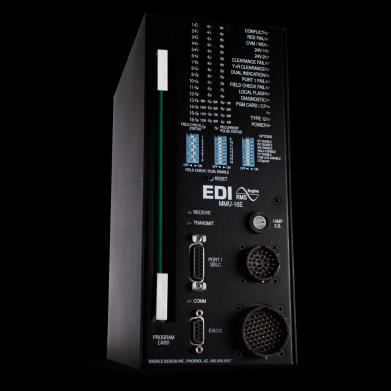
4 minute read
Existing Conditions
This section provides an overview of the existing traffic signal equipment deployed in the City. Further details on the system inventory are contained in the Existing Conditions report developed under the ITS Master Plan.
Central System Software
The central system software allows the City to view signal operations in real-time. The central system software is often also referred to as the Advanced Transportation Management System (ATMS) software. There are differences, but they can be subtle or distinct. For the purposes of this study, they can be used interchangeably. City staff are provided access credentials and thus anyone with the proper credentials can monitor traffic signal status and adjust signal operations from their city workstation or remote laptop when connected to the City network.
The City has been utilizing Siemens traffic control products for decades. They are currently using Siemens TACTICS for their central system software, which exclusively controls only traffic signals. The TACTICS software is Siemens’ current offering for controlling and managing traffic signals.
Traffic Management Center
A Traffic Management Center (TMC) serves as a central location for monitoring traffic operations, adjusting timing, responding to incidents, and dispatching personnel to fix field problems. The City’s “TMC” is located in the signal shop and consists of 2 workstations with 2 monitors for display. The City’s Traffic Engineer has TACTICS installed on his office workstation and can control traffic signals from his office.
Field Devices
Each signalized intersection consists of a variety of equipment to actually detect and control traffic at the intersection. Additional information on the equipment is contained in Concept of Operations document. The equipment quantities are based on inventory information provided by the City. More discussion of individual field device by type is further discussed below.
Traffic Signal Cabinet
In Tyler, 51% (76 of 149) of all traffic signal cabinets are NEMA TS-2 cabinets. The remaining cabinets (73 of 149; 49%) are legacy NEMA TS-1 cabinets. The TS-1 cabinets are obsolete, and the TS-2 cabinets are considered mature. Existing cabinets are performing adequately.

Traffic Signal Controllers and Firmware

In Tyler, 75% (112 of 149) of the signal controllers are manufactured by Siemens. Of those, 23 are EPAC. The remaining 89 Siemens controllers are M40, M50, M51, M52, or M60. Four controllers in the City are of the M40 class from Siemens (pictured to the left). For the remaining
Four of the City’s controllers are the M40 class from Siemens (above) signal controllers in the city, 30 (20%) are Econolite ASC/3 and 7 (5%) are Econolite Cobalt. The existing traffic signal controllers are controlling intersection operations at an acceptable level.
Vehicular and Pedestrian Detection

Vehicle detection in Tyler is predominantly video based; 113 intersections (76% of total signalized intersections) have video image vehicle detection system (VIVDS) cameras installed. The VIVDS device manufacturers are currently not catalogued. 15 intersections have traditional inductive loops, 8 intersections have Wavetronix radar detection, and 13 intersections are fixed-time/nonactuated. The City identified the video detection as working well.

Source: Iteris
Audible pedestrian push button systems, which provide verbal instructions for visually impaired pedestrians, are installed at 2 intersections (1% of total).
Malfunction Management Units

The majority of the City of Tyler’s MMUs are manufactured by EDI, with the exception of 2 MMUs manufactured by Reno. Of the 147 EDI MMUs, 73% (107 of 147) are in the MMU-16E or MMU-16LE series. 6% (9 of 147) are in the EDI 12LE series. 2% (3 of 147) are in the EDI SSM-12 series, and 3% (5 of 147) are unknown models. The remaining 16% (23 of 147) are in the EDI NSM-12 series, which does not support Flashing Yellow Arrow (FYA) operations.
Battery Backup Units
Source: EDI The City currently has eight Battery Backup Units (BBUs) installed. It has been reported by City staff that only two of the eight existing BBUs are not currently operational because the batteries are beyond useful life and do not carry a load (i.e., dead). Per TxDOT requirements, BBUs are required on City-operated signals on TxDOT roadways.
Pre-Emption Systems
In the City of Tyler, one signal has railroad preemption. Emergency vehicle pre-emption is not currently in place.

School Zone Flasher System
The City operates 72 school zone clocks that do not currently have communications. The times for which the school zone flashers are active are programmed manually for each flasher. Changes in the scheduled time are adjusted annually before the schools are back in session.
Existing Communications Network
The City’s existing communication network to the field ITS devices using wireless radios, cable modems, and twisted-pair copper wire were discussed with City staff. The City has constructed a “hybrid” communications network consisting of both wired and wireless communications, which is described below.
Fourteen (9%) of the intersections have cable modems (DSL, from SuddenLink), seven (5%) have City-owned or leased fiber, 38 (26%) have fixed broadband radio (5.8 GHz), two (1%) have both radio and twisted wire pair, and six (4%) have twisted wire pair. Seventy percent of the City’s traffic signals have no communication back to the Siemens TACTICS traffic management system.



